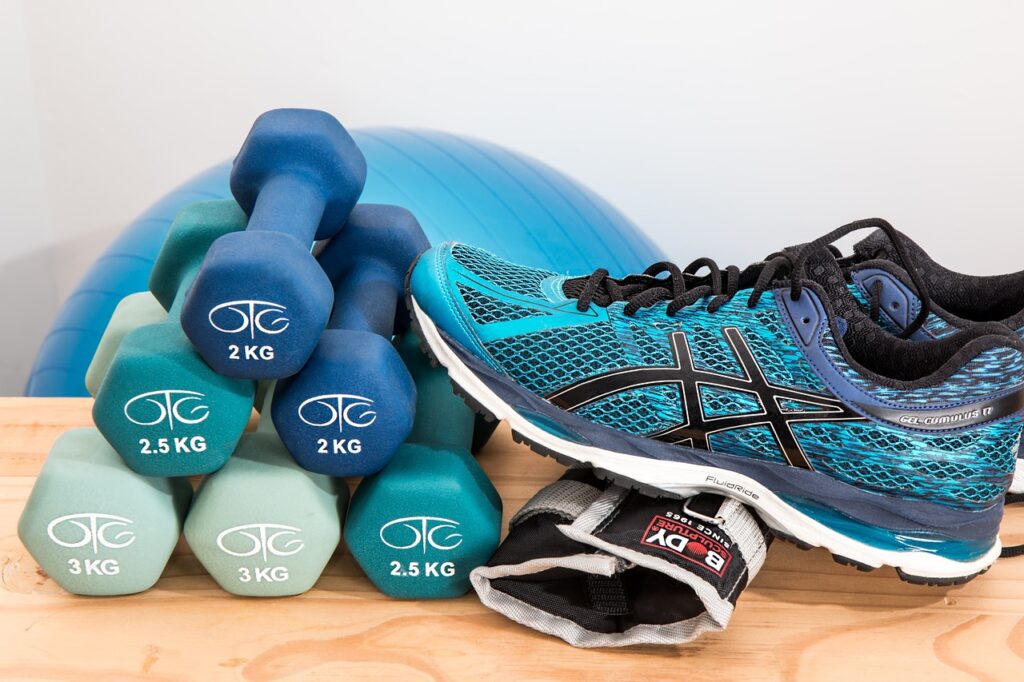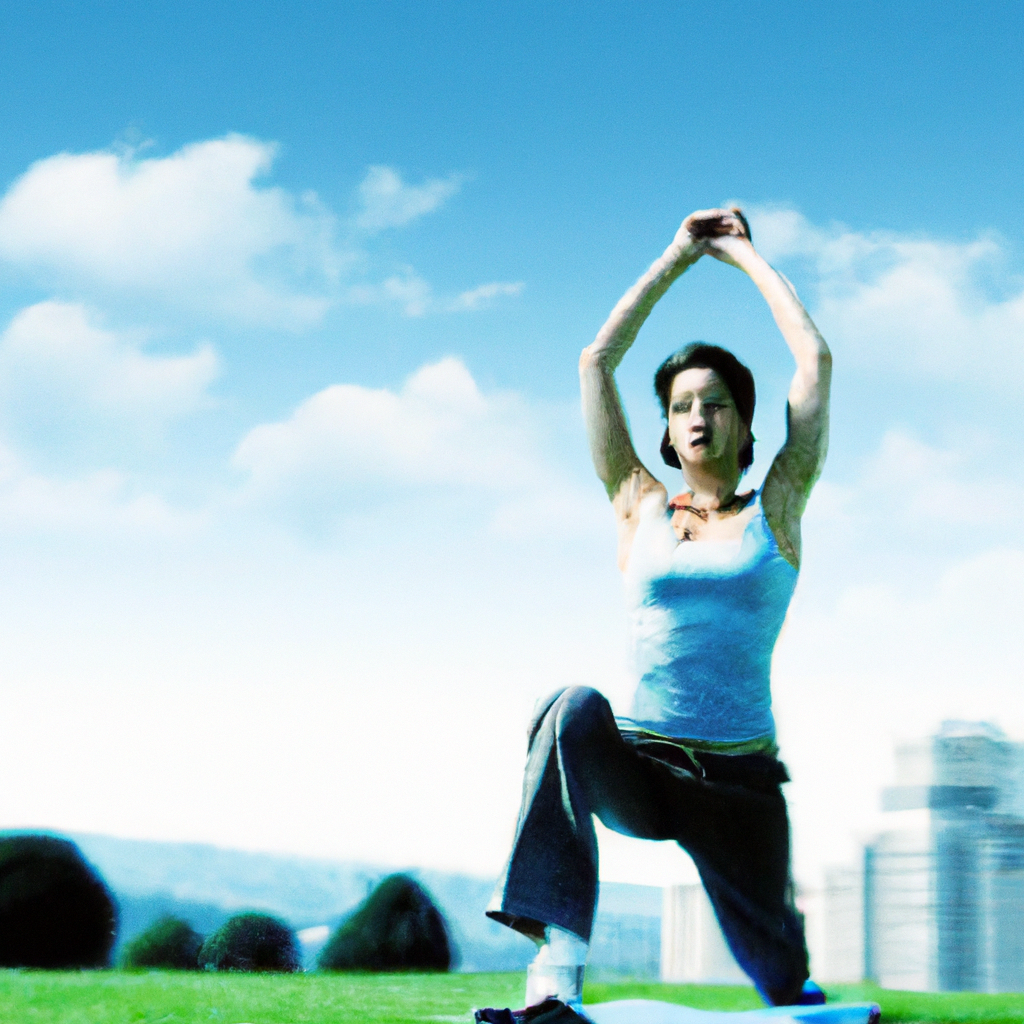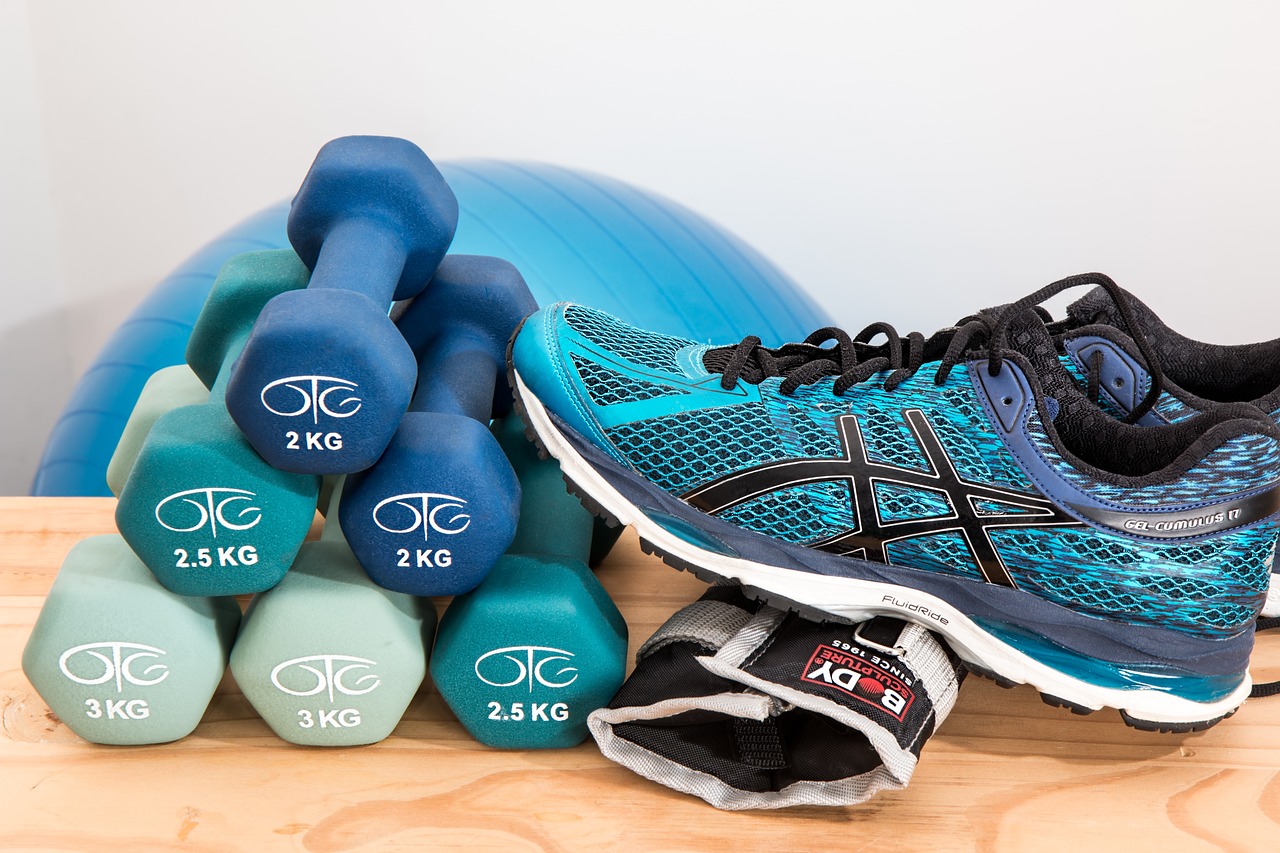Are you searching for the ultimate formula to achieve the perfect exercise balance? Look no further! In this article, we will explore the importance of finding the right mix between cardio, strength training, and flexibility exercises. With a friendly and informative tone, we will guide you towards a balanced routine that will help you reach your fitness goals and maintain a healthy lifestyle. Say goodbye to endless hours spent at the gym without seeing results – it’s time to find your perfect exercise equilibrium!
Importance of Finding the Perfect Exercise Balance
Finding the perfect exercise balance is crucial for overall health and wellness. It is essential to incorporate a combination of cardio, strength training, and flexibility exercises into your fitness routine to reap the maximum benefits. Each type of exercise targets different aspects of physical fitness and contributes to your overall well-being.
Benefits of Cardio, Strength, and Flexibility Exercises
Cardiovascular exercises, strength training exercises, and flexibility exercises come with their unique set of benefits that contribute to your overall health and fitness.
Cardiovascular exercises, also known as aerobic exercises, are crucial for improving your cardiovascular health. They help strengthen your heart and lungs, enhance your endurance levels, promote weight loss, reduce the risk of chronic diseases like heart disease and diabetes, and boost your mood.
Strength training exercises, on the other hand, focus on building and strengthening your muscles. They help improve your overall strength and power, increase bone density, enhance joint stability, boost metabolism, and aid in weight management. Additionally, strength training exercises can improve your overall body composition, giving you a leaner and more toned appearance.
Flexibility exercises primarily target your range of motion and help improve your joint mobility and muscle flexibility. They can alleviate muscle tension and improve posture, reduce muscle stiffness, minimize the risk of injuries, and enhance athletic performance. Regular flexibility exercises can also help improve your balance and coordination.

Understanding the Different Types of Exercise
To find the perfect exercise balance, it is essential to understand the different types of exercise and how they contribute to your overall fitness.
-
Cardiovascular Exercises: Cardiovascular exercises are characterized by repetitive movements that increase your heart rate and breathing. They generally involve large muscle groups and are rhythmic in nature. Running, cycling, swimming, dancing, and brisk walking are a few examples of cardiovascular exercises.
-
Strength Training Exercises: Strength training exercises, also known as resistance training or weightlifting, involve using resistance or weights to build and strengthen muscles. They can be done using free weights, machines, resistance bands, or even your body weight. Squats, deadlifts, bench press, bicep curls, and planks are all examples of strength training exercises.
-
Flexibility Exercises: Flexibility exercises focus on stretching and lengthening muscles to improve their elasticity and range of motion. These exercises can be static or dynamic stretches and can be performed either on their own or as part of a warm-up or cool-down routine. Some examples of flexibility exercises include yoga, Pilates, stretching exercises, and foam rolling.
Cardiovascular Exercises
Cardiovascular exercises play a vital role in maintaining good cardiovascular health and overall fitness. They help improve endurance, promote weight loss, and reduce the risk of chronic diseases.
Cardiovascular exercises work by increasing your heart rate and allowing the heart to pump oxygen-rich blood to different parts of the body efficiently. This improved circulation helps strengthen the heart muscle and improves its efficiency in supplying oxygen and nutrients to the body. Regular cardiovascular exercise can also improve lung function, making breathing easier during physical activities.
Examples of cardiovascular exercises include running, jogging, cycling, swimming, aerobics, dancing, kickboxing, and high-intensity interval training (HIIT). It is recommended to engage in at least 150 minutes of moderate-intensity cardiovascular exercise or 75 minutes of vigorous-intensity cardiovascular exercise per week.

Strength Training Exercises
Strength training exercises help build and strengthen muscles, improve bone density, and boost metabolism. They are an essential component of any well-rounded exercise routine.
Strength training exercises work by placing stress on your muscles, causing them to adapt and grow stronger over time. They can be done using free weights, weight machines, resistance bands, or your body weight. It is essential to progressively increase the resistance used to continue challenging your muscles and promoting muscle growth.
Examples of strength training exercises include weightlifting, squats, lunges, deadlifts, bench press, bicep curls, push-ups, pull-ups, and planks. It is recommended to perform strength training exercises at least two to three times a week, targeting all major muscle groups.
Flexibility Exercises
Flexibility exercises focus on enhancing your range of motion, muscle flexibility, and joint mobility. They are crucial for maintaining good posture, preventing injuries, and improving athletic performance.
Flexibility exercises work by stretching and lengthening your muscles, tendons, and ligaments. They can be performed before and after other types of exercises or as a standalone practice. Regular flexibility exercises can help improve joint health, prevent muscle imbalances, and reduce muscle soreness.
Examples of flexibility exercises include yoga, Pilates, static stretching, dynamic stretching, and exercises that target specific muscle groups or joints. It is recommended to incorporate flexibility exercises into your routine at least two to three times a week, focusing on all major muscle groups.

Creating an Exercise Schedule
Determining the right frequency and balance of different types of exercises is essential for optimizing your fitness routine.
Determining the Right Frequency
The right frequency of exercise depends on your individual fitness goals, current fitness level, and time availability. Aim for a minimum of 150 minutes of moderate-intensity cardiovascular exercise or 75 minutes of vigorous-intensity cardiovascular exercise per week. Additionally, include at least two to three sessions of strength training exercises and flexibility exercises each week.
Balancing Different Types of Exercises
To maintain a well-rounded exercise routine, it is important to balance different types of exercises. Include a mix of cardiovascular exercises, strength training exercises, and flexibility exercises throughout the week. This ensures that you are targeting all aspects of fitness and enjoying the benefits of each exercise category.
For example, you can alternate between cardiovascular and strength training exercises on different days to allow for muscle recovery. Similarly, incorporating flexibility exercises on rest days or as part of your warm-up and cool-down routine can help improve muscle flexibility and prevent injuries.
Indicators of Imbalance
Overtraining and muscle imbalances can occur if there is an imbalance in your exercise routine. It is important to be aware of the signs and symptoms to avoid these issues and maintain a healthy exercise balance.
Common Signs of Overtraining
Overtraining can lead to physical and mental exhaustion, decreased performance, increased risk of injuries, and suppressed immune system. Some common signs of overtraining include persistent fatigue, irritability, mood swings, decreased motivation, difficulty sleeping, frequent injuries, and prolonged muscle soreness. If you experience any of these symptoms, it is important to reassess your exercise routine and make the necessary adjustments.
Identifying Muscle Imbalances
Muscle imbalances occur when certain muscle groups are stronger or more developed than others. This can lead to poor posture, decreased mobility, and increased risk of injuries. Regularly assessing your body’s symmetry and addressing any muscle imbalances through targeted exercises can help ensure balanced muscular development.

Factors to Consider
When finding the perfect exercise balance, it is important to consider individual fitness goals, time constraints, and lifestyle factors.
Individual Fitness Goals
Understanding your fitness goals is crucial in determining the right balance of exercises. Whether you want to lose weight, build muscle, improve cardiovascular health, or increase flexibility, tailoring your exercise routine to align with your goals is key. Consulting with a fitness professional can provide guidance and help structure a routine that is specific to your needs.
Time Constraints and Lifestyle
Consider your time availability and lifestyle when creating your exercise schedule. If you have limited time due to work or personal commitments, shorter but intense workouts like HIIT can be a great option. Additionally, incorporating physical activities you enjoy, such as dancing or hiking, can help make your exercise routine more enjoyable and sustainable.
Seeking Professional Guidance
If you are unsure about creating a balanced exercise routine or if you have specific fitness goals or concerns, it is beneficial to seek professional guidance.
Consulting with a Fitness Trainer
A fitness trainer can assess your fitness level, discuss your goals, and help you create a customized exercise plan. They can guide you through proper exercise techniques, recommend appropriate exercises and intensity, and provide motivation and support throughout your fitness journey.
Working with a Physical Therapist or Sports Coach
If you have specific injuries or conditions that require additional attention, consulting with a physical therapist can be beneficial. They can provide exercises and stretches to address your specific needs and ensure proper rehabilitation and injury prevention. Similarly, if you are participating in a specific sport or activity, working with a sports coach can help improve your performance and target the necessary muscle groups.

Adjusting Exercise Intensity
To keep progressing in your fitness journey and avoid hitting a plateau, it is important to adjust the intensity of your exercises.
Progressive Overload
Progressive overload is the gradual increase in the demands placed on your body. To continue making progress, you should gradually increase the weight, resistance, repetitions, or duration of your exercises. This challenges your muscles and promotes further strength and endurance gains.
Avoiding Plateau
Plateau occurs when you reach a point where your fitness progress stagnates. To avoid hitting a plateau, it is important to consistently vary your exercises, intensity, and volume. Including different variations of exercises, trying new activities, and incorporating interval training can help keep your workouts challenging and prevent boredom.
Listening to Your Body
One of the most important aspects of finding the perfect exercise balance is listening to your body and recognizing its needs.
Recognizing the Signs of Fatigue
Fatigue is your body’s way of telling you that it needs rest. Pushing yourself too hard without adequate rest and recovery can lead to overtraining and diminish your overall progress. Pay attention to signs of excessive fatigue, such as persistent soreness, inability to recover between workouts, or a decline in performance. When you experience these signs, it is important to give yourself enough rest to allow your body to recover and adapt.
Importance of Rest and Recovery
Rest and recovery are essential components of any exercise routine. It is during rest periods that your body repairs and strengthens itself, allowing you to come back stronger for your next workout. Aim for at least one to two rest days per week and incorporate active recovery such as walking or light stretching on those days. Additionally, prioritize sleep as part of your overall recovery strategy, as quality sleep aids in muscle repair and growth.
In conclusion, finding the perfect exercise balance is crucial for optimizing your fitness routine and promoting overall health. Incorporating a combination of cardiovascular exercises, strength training exercises, and flexibility exercises will help you achieve a well-rounded fitness regimen. By understanding the benefits and types of exercises, creating a balanced exercise schedule, and listening to your body, you can achieve your fitness goals while minimizing the risk of overtraining and muscle imbalances. Remember, consult with professionals, adjust intensity as needed, and prioritize rest and recovery to maintain a sustainable exercise routine.



